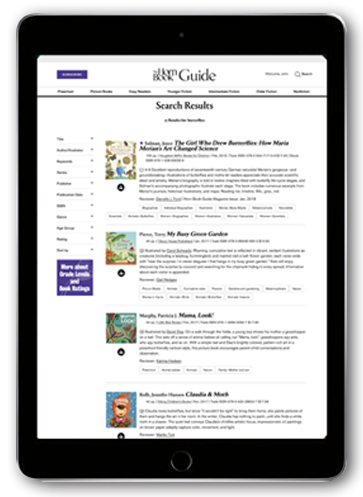Kelsey Oseid
3 Reviews
(2)
PS
Whose Is THAT? series.
Illustrated by
Kelsey Oseid.
Lunde and Oseid's third collaboration stays true to their successful formula, turning this nonfiction picture book into a guessing game that uses eggs to explore different species and teach larger lessons about the natural world. Spreads follow a pattern that young children will quickly grasp: the first spread asks a question ("Whose egg is that?"), the second shows a close-up of the egg, the third pans out and identifies the parent animal, and the fourth gives a few additional facts about the species. Oseid's delicately rendered gouache illustrations provide visual hints. Each page-turn builds in details that reward the alert observer and teach much about the animals' habitats and behaviors. Many young readers will be surprised and delighted to find that eggs come in an array of colors and sizes. Others will enjoy learning how not just birds, but also animals such as platypuses and leatherback sea turtles come from eggs. Pair this crowd pleaser with Aston and Long's An Egg Is Quiet to foster children's curiosity and observation of the world around them.
Reviewer: Adrienne L. Pettinelli
| Horn Book Magazine Issue:
January, 2023
(2)
PS
Illustrated by
Kelsey Oseid.
Following the format of Whose Poop Is THAT? (rev. 3/17), Lunde poses the title question seven times about seven different animals in a series of four-page sequences, inviting readers to guess the makers of various footprints and impressions. Each print, rendered in shades of black and brown on a white background, is centered prominently on the right-hand page. A clue for identification comes via the accompanying text, which emphasizes the motions or actions employed to produce the print ("It was made by running on snow"; "It was made by standing in soft mud"). Additional hints to each creature's identity are found on left-hand pages, with glimpses of an ear, tail, nose, etc., edging into the picture. For the reveal, illustrations of mountain goats, wallaroos, snowshoe hares, snakes, flamingos, chimpanzees, and even a dinosaur are accompanied by information about what part of them made the prints (variously: feet, bodies, knuckles) and the ways their physiologies allow the animals to move or balance; the seven examples are carefully chosen to represent the relationships between morphology and function. The book ends with a look at the various prints people can make with their footwear, connecting familiar human experiences with their animal equivalents.
Reviewer: Danielle J. Ford
| Horn Book Magazine Issue:
January, 2020
(2)
K-3
Illustrated by
Kelsey Oseid.
Lunde leverages children's fascination with poop to introduce how animals can be identified by their scat. In four-page sequences, the title question faces an up-close illustration of animal scat and a sentence pointing out features. Turn the page, and the animal is revealed, along with additional information. Both the text and illustrations are accurate while remaining friendly and inviting to novice naturalists.
Reviewer: Danielle J. Ford
| Horn Book Magazine Issue:
March, 2017
3 reviews
We are currently offering this content for free. Sign up now to activate your personal profile, where you can save articles for future viewing.






